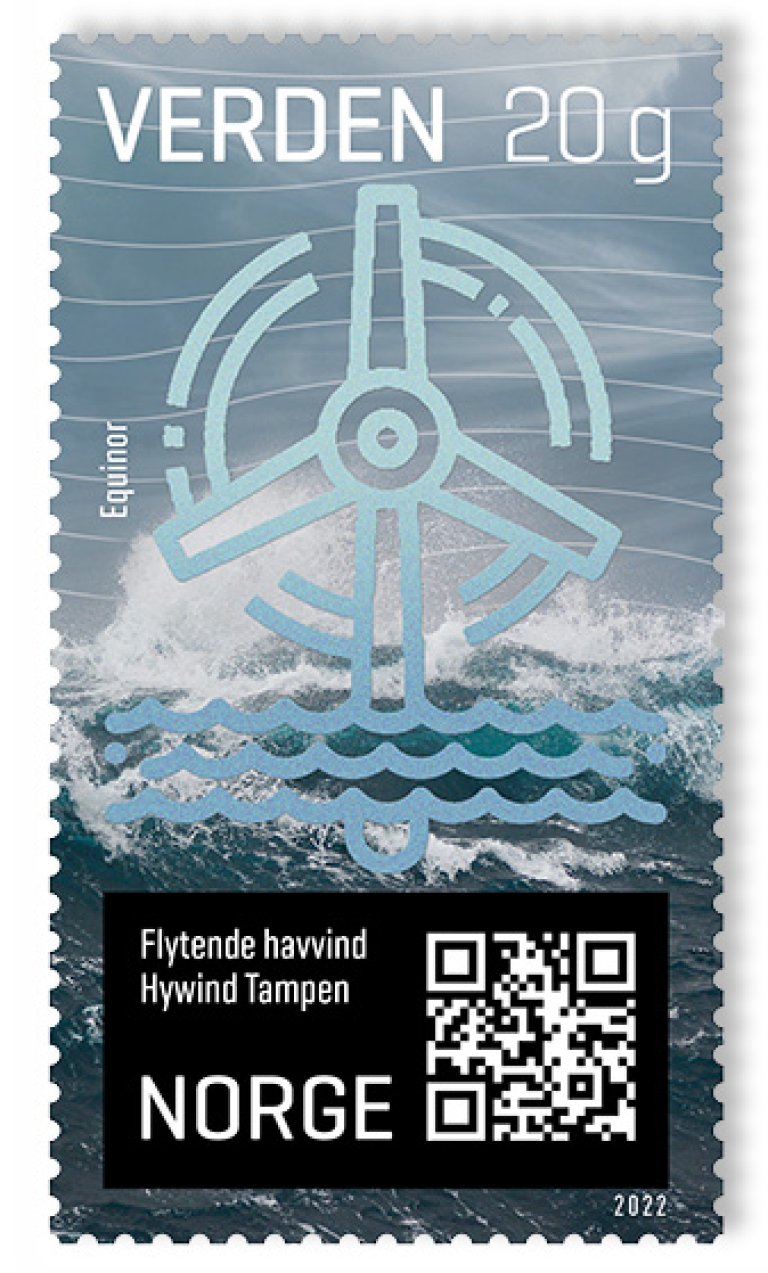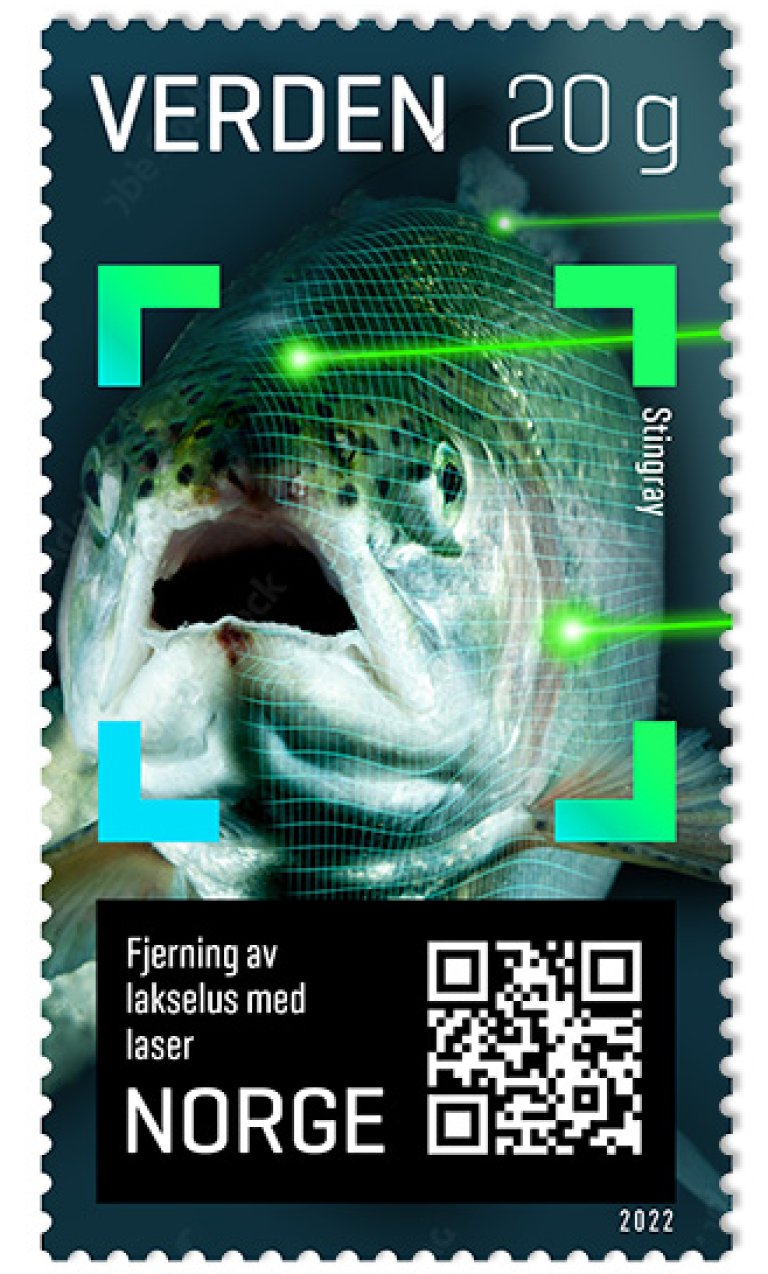Issue 1 October 2022 Research, Innovation, Technology
The Research, Innovation, Technology series is being issued this year for the third time. The themes are Equinor’s wind power initiative Hywind Tampen and Stingray’s laser removal of salmon lice. By scanning the QR code on the stamps, you will be directed to the Research Council of Norway’s website, where both the technology and the backstory are explained.
Floating wind power
Hywind Tampen is a floating wind power project and will be the first in the world to power offshore oil and gas platforms. Equinor’s offshore wind farm will be a test environment for further development of offshore wind. The floating design of the turbines allows them to be placed in areas of the sea where the water is too deep for bottom-fixed turbines.

The wind farm is located approximately 140 km off the Norwegian coast, west of Sognefjorden. The turbines in the park will be about 190 metres tall with a rotor diameter of 167 metres. The offshore wind farm will consist of eleven wind turbines and be able to supply five selected oil platforms with 35 per cent of their annual electrical power requirements. The project will reduce CO2 emissions by 200,000 tonnes and NOx emissions by 1,000 tonnes a year. The farm's annual production is estimated to represent approximately ten per cent of Norway’s total wind power production.
Delousing with laser
The exponential growth of salmon farming in Norway since the 1980s has had major economic and ecological consequences. Salmon lice cause physical damage to the fish and have become a major problem in the fish farming industry.

The Norwegian company Stingray Marine Solutions AS has developed a system that uses laser to kill salmon lice. The system employs light, advanced cameras and a surgical laser to recognise lice on the salmon's skin. In the one to two seconds that it takes the salmon to swim past the system, the exact position of a louse on the fish is identified and the system directs the laser at it. This fires a pulse of light so hot that the louse dies while fish swim away unharmed. The system, known as “The Fish Health Hub”, also monitors the health and welfare of the fish, and some of the key indicators of fish welfare are swimming speed, sexual maturation and winter ulcers.
Facts
- NK 2081-82
- Motifs: Floating offshore wind, laser removal of sea lice
- Design: Enzo Finger
- Photo: Stockfoto
- Denomination: NOK 34 x 2
- Issued in: Booklet of 10 stamps
- Print run: 220.000 of each stamp
- Print: Offset from Joh. Enschedé Security Print, The Netherlands